Who said going green wasn’t fast? The hyper Kia EV6 GT has joined the model line-up a year later in Australia to contest the Tesla Model Y Performance. But, is it a true electric ‘grand tourer’?
Grand tourer (GT): A car that is designed for long-distance driving and high performance.
As the Kia Stinger closes its chapter, the EV6 GT has launched as the spiritual successor to the GT liftback – which catalysed the South Korean carmaker’s shift from bargain basement to sporty semi-premium.
The Kia EV6 GT is now the high performance hero in the electric crossover SUV range, but does it live up to the ‘GT’ badge and is it worth the extra splurge into circa-$110,000 drive-away territory?
EDITOR’S NOTE: The test vehicle was provided by Kia Australia for a seven-day independent evaluation. No copy approval was given before publication and we have no commercial arrangements with the company.


Pros.
+ Yes, a Kia is an ‘attainable’ supercar
+ Firm, but liveable ride
+ Sharp handling, customisable regen
+ Unique interior and exterior touches
+ Respectable daily efficiency
Cons.
– Impossible to completely exploit on public roads
– Heavy around corners at times
– Missing some features, less range than GT-Line
– Doesn’t feel unique enough, outdated tech
– iPedal almost fixed, still not true one-pedal driving
Vehicle tested:
| Model | 2023 Kia EV6 |
| Variant | GT |
| Starting price | $99,590 before on-road costs |
| Exterior colour | Moonscape Grey ($3295) |
| Interior colour | GT design artificial suede/leather with neon green stitching and piping |
| Country made | South Korea |

Design.
It’s clear that the GT badge best fits the Kia EV6 design.
The hi-po flagship variant is visually differentiated by larger and less aerodynamic 21-inch alloy wheels, neon green painted brake callipers, and discreet vertical elements across the front bumper, grille, and rear.
The GT-exclusive slick sequential front and rear turning indicators, combined with the full-width curved rear LED light bar made up of individual whiskers, complete the package well to be an attractive head-turner. I realise a similar sentiment can be said for the half-price BYD Atto 3, though.
Otherwise, it’s mostly the same as the regular GT-Line with its lower ground clearance (GT is a further 5mm less) and swoopy rear that’s more reminiscent of a sportswagon rather than a SUV.
My tester’s hero Moonscape Grey matte colour is quite pricey at $3295 – especially when compared to the Hyundai Ioniq 5 sibling’s Gravity Gold Matte which only costs $1000 – but it is a high quality finish, absorbs light, and beads water off easily.
I wouldn’t suggest it with all the loose rocks lying on public roads – which has already chipped a bit off on this press vehicle – but at least it makes a head-turning statement. Unfortunately, there isn’t any exclusive colour option on the GT – which would help set it apart from the standard GT-Line.





Green = fast?
Neon green accents signify high performance for the Kia EV6 GT, unlike other carmakers that elect for red, blue or copper.
Unfortunately, the neon green accents, added suede interior materials, and other subtle design detail tweaks don’t feel unique enough to justify the sizable price premium.




The EV6 GT’s interior continues the neon green theme across the stitching and piping on all four seats, plus stitching on the steering wheel and adds a GT mode button. The front seats are a sportier thin bucket-style design, and all feature artificial suede material in the centre with faux leather at the outer edges, as per the GT-Line.
Moreover, the high-quality feeling faux suede extends to all four interior door trims, which makes this pricier GT variant feel more special – even though this is standard on the sub-$70K Tesla Model Y.
However, the dashboard and centre armrest still have the same pattern design as the GT-Line (except there’s a bona fide GT badge in front). The GT also substitutes the GT-Line’s white lower plastics for plain black.
The key bugbear of hard, cheap and fingerprint-prone gloss black surfaces on the interior door grab and centre console persists here. Similarly, lower plastics feel scratchier and harder than its Hyundai Ioniq 5 electric SUV sibling – which is a particular annoyance at this GT’s high price point.
Unfortunately, the EV6 GT’s minor unique design elements aren’t enough to justify the extra $12,000 spend compared to the GT-Line all-wheel drive (AWD) and substantial $20,000 premium on top of the GT-Line rear-wheel drive (RWD).
Yet, the EV6 still executes the best sporty-feeling interior design in the current Hyundai Motor Group EV portfolio – with an ergonomic ‘floating’ centre console, curved displays, and impressive 64 colour-selectable ambient lighting strips.
It wraps towards the driver with intricate whiskers on the dashboard, and illuminates the bottle holders on all four doors to truly lift up the interior in the dark – though, again, it’s already standard on the EV6 GT-Line RWD, which costs $20,000 less.

Practicality.
2023 Kia EV6 GT dimensions:
| Length x width x height | 4695 x 1890 x 1545mm |
| Wheelbase | 2900mm |
| Ground clearance | 155mm |
| Boot capacity (min / rear seats folded) | 480 / 1260-litres |
| Rear seat split fold | 60:40 |
| Child seat anchors | Rear seats: 2x ISOFIX + 3x top-tethers |
| Frunk capacity | 20L-litres |
The Kia EV6 GT offers the same boot and frunk space as the regular GT-Line. The boot has less usable height volume due to the lower roof and sloping rear, but comes with a flat loading lip and a hands-free electric tailgate.
It also lacks any bag hooks, the luggage net is relatively small, and has limited underfloor space. But, the tiny frunk under the bonnet is enough to store the included three-pin trickle charging cable.
Likewise, the rear seats feel identical to the regular GT-Line, except for the unique green accents and less outer vision due to the bigger front bucket seats, though you peek see through the holes. It has wide bench seat to comfortably sit three, a flat floor, and plenty of legroom thanks to the long wheelbase afforded by the Hyundai Motor Group’s Electric Global Modular Platform (E-GMP).
But, compared to its Hyundai Ioniq 5 sibling, headroom is less due to the lower roof and higher seating position. The front GT-style bucket seat integrated headrests almost touch the ceiling, along with less foot space sliding underneath the front seats. The black headliner and standard sunroof (instead of panoramic) also means the interior feels less airy.




Rear passengers do still benefit from rear air vents placed higher up on the B-pillars, the fold down armrest offers a clever sliding mechanism to retract the cup holders, and has mildly tinted rear windows. Unlike the Ioniq 5, there’s no built-in window sunshade.
The GT’s bucket seats have also meant the USB-C charging ports have shifted to the centre console instead, and there’s no seatback pockets nor Kia’s unique coat hanger headrest compared to the cheaper GT-Line. You’ll need to use the standard a hook at the right-side roof handle.
A practical design element still exclusive to the EV6 is the felt material on all door bottle holders to prevent rattling, which are particularly larger than typical Kia SUVs.
Additionally, there’s a ‘floating’ centre console at the front with ergonomic cup holders, a Qi wireless charging pad, and a deep armrest cubby. Strangely, there isn’t any locking mechanism for the armrest lid and the hinge didn’t want it to close completely on my tester.
Under the centre console is a large tray – oddly complemented by bag hooks – which was mostly used for storing my smartphone since the USB-A port for wired smartphone projection is down at the front. The EV6 also offers a large and deep glovebox.



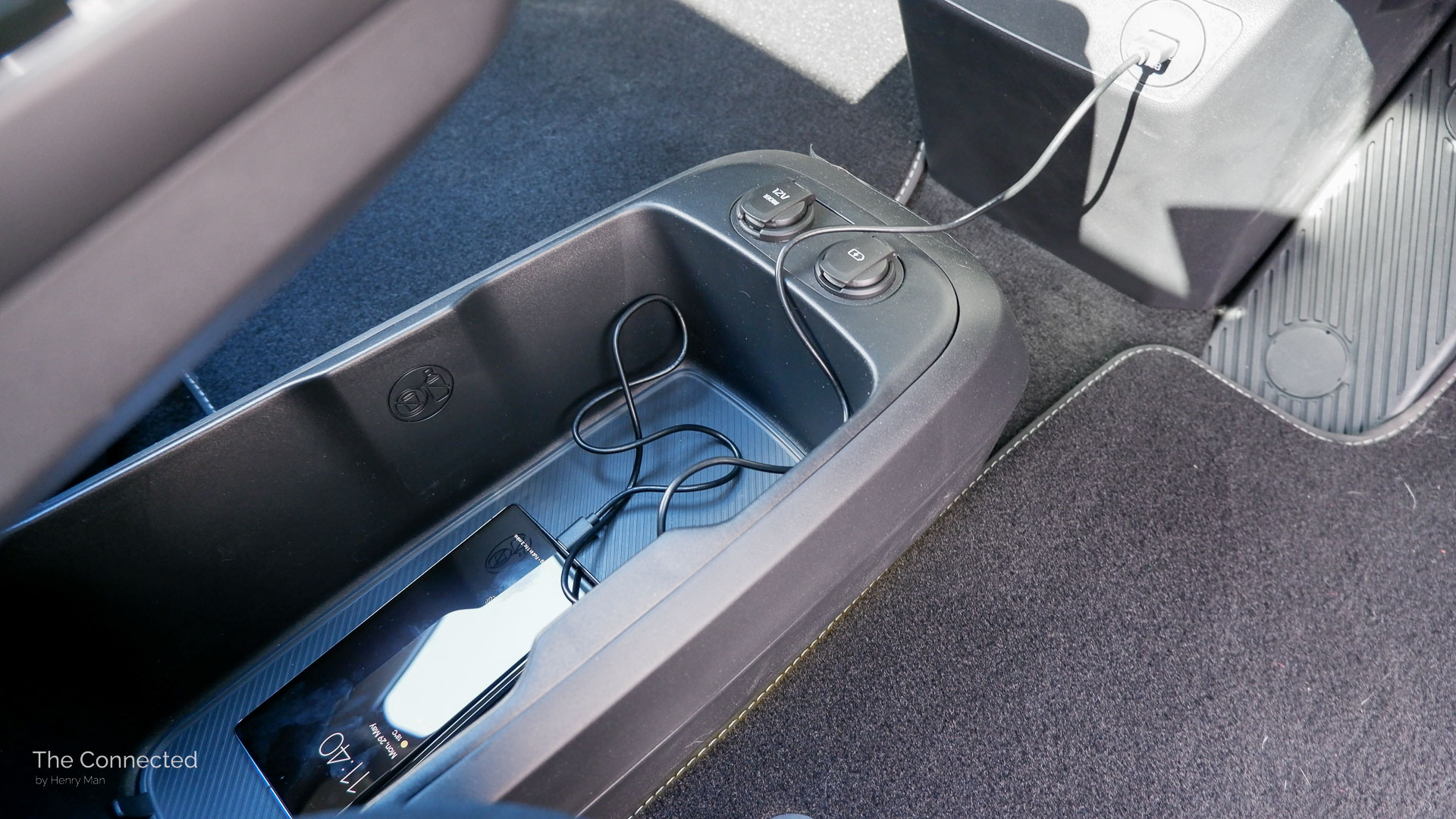
Similar to the rear row, front head space is limited due to the lower roof height and sunroof. In my seating position, my eyeline was closer to the sun visor, so taller driver’s be aware.
The front GT-exclusive bucket seats with integrated headrests are firm and very supportive with good side bolsters, but they can ache on longer drives. In my driving position, the thick bolsters did impede on accessing the seatbelt at the B-pillar slightly.
Unlike the cheaper GT-Line, the front seats don’t have electric adjustment (really, a tiny weight saving measure on a heavy 2185kg EV?), nor seat and wing mirror memory function – so the latter also doesn’t dip down when reversing to help avoid curbing those precious 21-inch rims.
Unfortunately, while it has three-stage heated front seats, it omits ventilation functionality (handy for Australian climates) and the relaxation mode as standard on the GT-Line trims.
These missing comfort and convenience features are disappointing, given it doesn’t fit the supposed promises of a GT car, nor its lofty price tag.
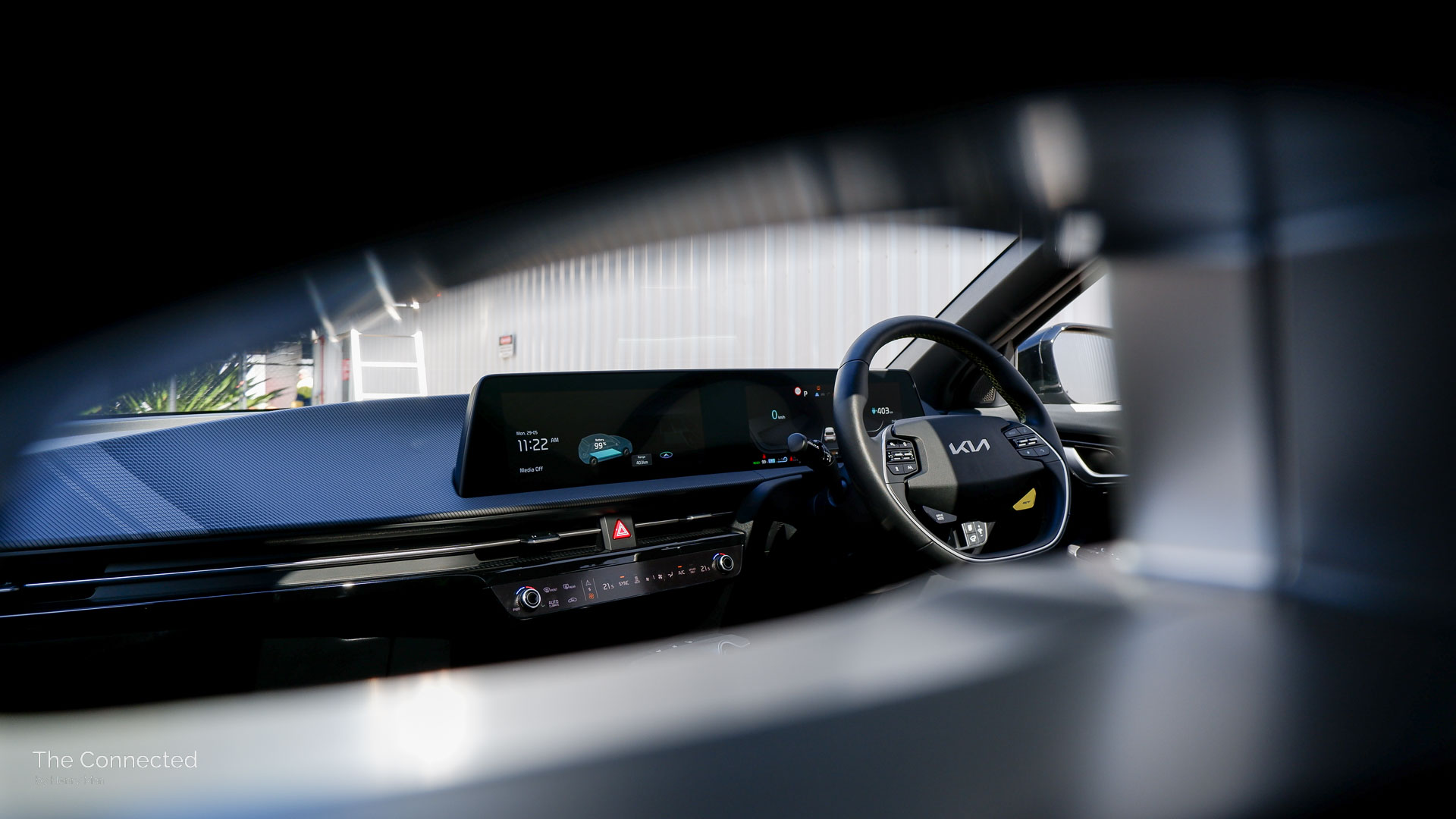
Technology.
2023 Kia EV6 GT tech features:
| 12.3-inch curved touchscreen with built-in maps, AM/FM/DAB radio | Climate control/media touchscreen strip |
| Wired Apple CarPlay and wired Android Auto | 64-colour selectable interior ambient lighting |
| 12.3-inch curved driver instrument display | Qi wireless charging pad, 1x USB-A data/charging, 4x USB-C charging ports |
| Augmented reality head-up display (AR HUD) | Proximity key with remote start and push button start |
| 14-speaker Meridian Premium audio (5 speakers, 4 tweeters, 4 woofers, 1 subwoofer) | Automatic parking assist with remote function |
As per all Kia EV6 models, the GT features dual concave curved displays running the company’s outgoing operating system.
It isn’t the newest software that debuted in the Hyundai Kona small SUV and soon-to-be Kia EV9 large electric SUV, but still looks decently modern in isolation – except for the clunky built-in maps.
It features wired Apple CarPlay and wired Android Auto via the single USB-A port. Both stretch the full screen and takes advantage of the wide aspect ratio – ideal for for the split view displaying maps and audio apps.
It’s worth noting that, while it has an ergonomic Qi wireless charging pad placement on the centre console suited for wireless smartphone projection, the EV6’s undertray still provides a great spot to plug in your smartphone – instead of the hard-to-reach front cubby on the related Hyundai Ioniq 5 and Genesis GV60.




As default, the touchscreen operates in dark mode, but there is a setting for automatic light/dark switching to make the screen more readable during the day, even if the light background doesn’t match the sporty EV6 interior feeling.
Unfortunately, like the Ioniq 5, it’s still missing Kia Connect built-in cellular and smartphone app connectivity in Australia – which should be expected for the company’s first futuristic ground-up EV. Oddly, it is available on cheaper and newer Kia models, such as the Seltos and Niro.
Unlike Hyundai’s N models, there also isn’t any dedicated GT app – with the only unique element being a battery preconditioning widget (more on that in the driving section).
Moreover, a touchscreen strip below switches between two functions – climate and media controls. While it looks modern in images, it’s not as practical in reality with small touch targets, sensitive and tiny dials, and the annoyance of switching between the two functions which adds another button press requirement.
Thankfully, you can set a default function, so it automatically switches to it after some time of inactivity. I left it on climate controls most of the time since the media strip isn’t as useful.
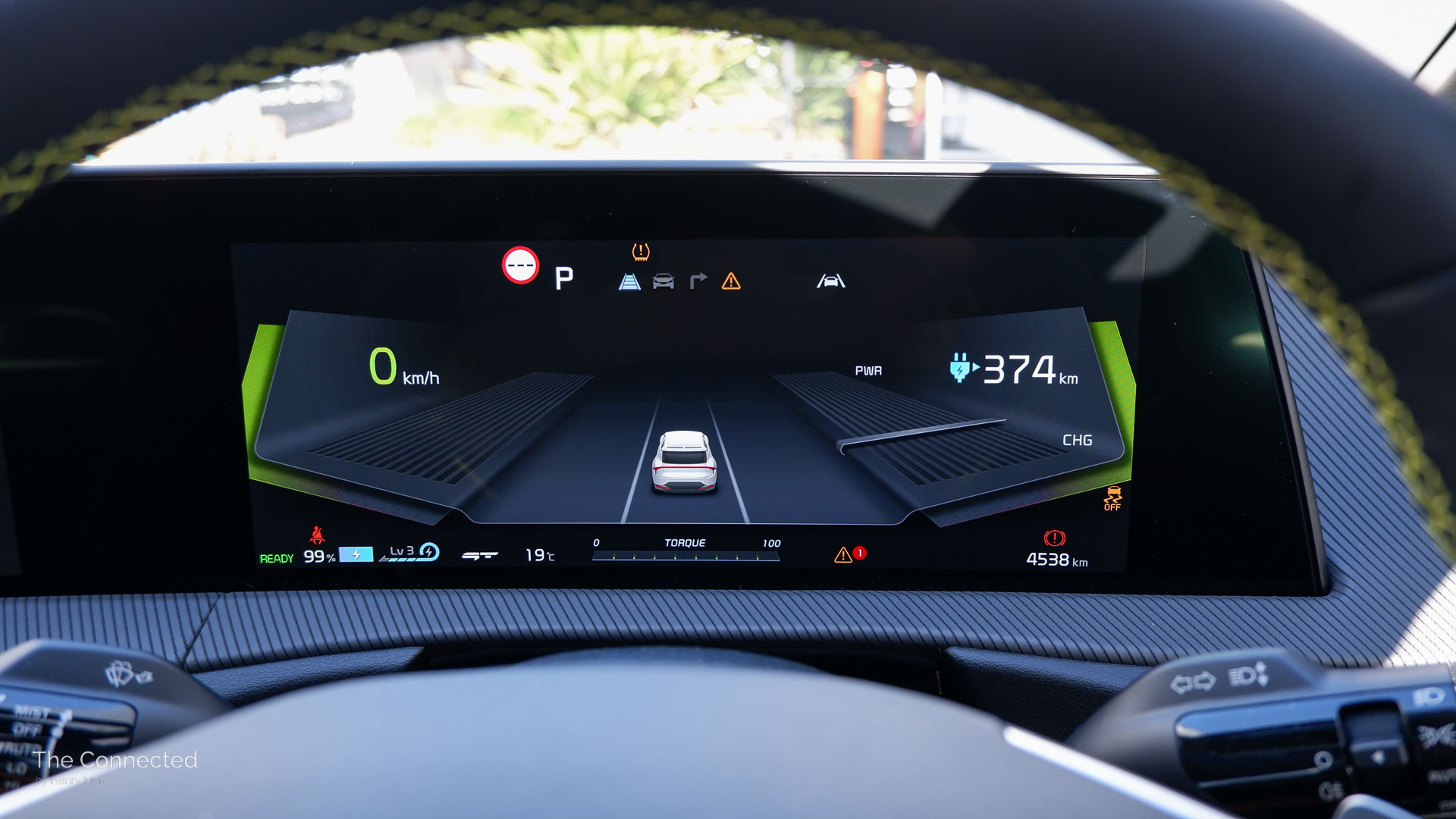


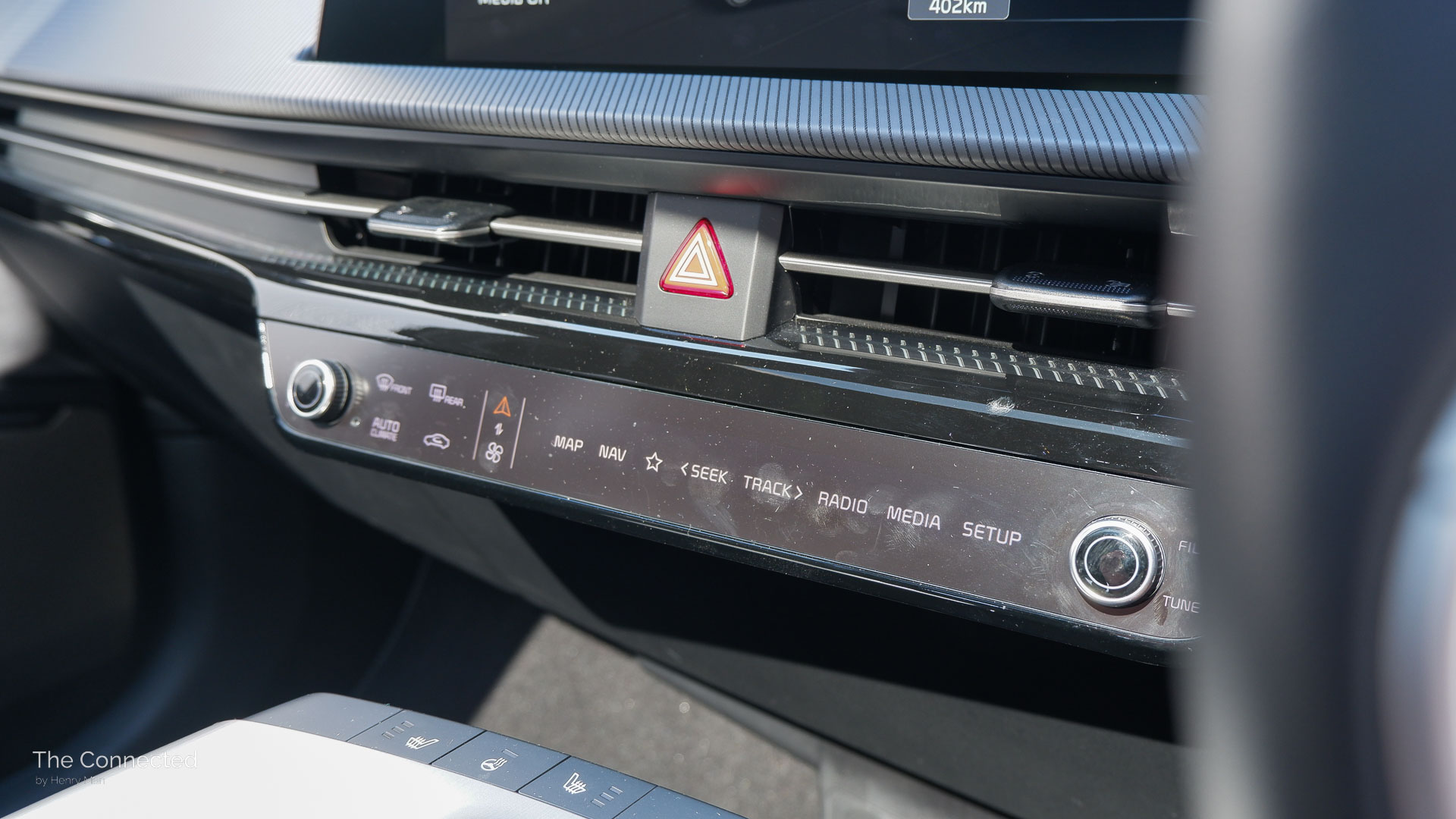
In front of the driver is a clear 12.3-inch instrument display. While it doesn’t provide much additionally functionality compared to a regular smaller screen and only introduces some green interface elements when the GT driving mode is activated, it is clear – always showing the estimated remaining range prominently, plus battery percentage and regenerative braking mode at the corner.
The standard augmented reality head-up display (AR HUD) is also convenient and legible, with a wider field-of-view and better resolution than the related Hyundai Ioniq 5. Though, the AR isn’t as impressive; it just projects some arrows when the lane departure warning is triggered and scales navigation arrows smaller to larger when approaching a turn when using the built-in maps.
Meanwhile, the 14-speaker Meridian Premium-branded audio system is one of the few I’ve tested that seems to prioritise vocals, instruments and high notes – there’s less of an emphasis on bass here (note: non-audiophile opinion here). It’s a contrast to the identically-branded system on the Polestar 2 electric liftback.

Safety.
2023 Kia EV6 GT safety features:
| Front auto emergency braking (AEB) with car/pedestrian/cyclist/intersection detection | 360-degree camera system |
| Lane change oncoming, side avoidance, and evasive steering assist | Front and rear parking sensors |
| Blind-spot assist | Driver attention monitoring and lead vehicle departure alert |
| Blind-spot view camera | Safe exit assist |
| Rear cross-traffic assist | Rear occupant alert |
| Rear AEB | Full LED head- and tail-lights |
| Adaptive cruise control | Adaptive high beam matrix LED headlights |
| Lane-keep and lane centring assist |
The Kia EV6 GT remains unrated by the Australasian New Car Assessment Program (ANCAP), but regular EV6 variants did receive the full five-star safety rating under its 2022 testing crtieria.
The camera and radar sensor-based active safety assistance suite works well, with reliable adaptive cruise control and a lane-centring assist system that only requires some driver input.
Unlike most other car brands, the Hyundai group’s lane-centring can be enabled at any speed without the need to turn on adaptive cruise as well. This can be handy when you want to take the pressure off steering, but still want to have full control of the pedal.
On the other hand, when you do want to really drive, a press and hold on the steering wheel icon disables lane departure alerts and lane-keep assist, which can be intrusive if travelling on narrow lanes.
Additionally, the all-round 360-degree and blind-spot view cameras are clear, and help driver’s to avoid curbing those large 21-inch wheels with a thin sidewall (though there’s still certainly no guarantee).




Notably, only this hi-po GT features adaptive matrix LED headlights, which automatically turns on the high beams and disables individual bulbs to avoid glaring other vehicles at night.
The system responds mostly well, though it can naturally be caught out and turn off too slow if oncoming traffic comes around an obstructed corner. As per regular EV6’s, overall headlight performance is impressive with good reach and spread – unlike the rather weak units on the Ioniq 5.
In contrast, adaptive matrix headlights are standard on the base Hyundai Ioniq 6 Dynamiq – though that seems to implement larger pixels – so I wish this was standard on the lower EV6 variants.

Range and charging.
2023 Kia EV6 GT battery and charging specs:
| Claimed driving range (WLTP combined) | 424km |
| Claimed efficiency (WLTP combined) | 206Wh/km |
| Battery size (usable) | 74kWh |
| Battery type | Lithium-ion (unknown cathode) |
| Battery voltage | 697-volts (800-volt class) |
| Max AC / DC charging speed | 10.5kW / 350kW |
| Bidirectional charging | V2L – interior and exterior (via included Type 2 adapter) |
| Connector type | Type 2 / CCS2 |
| Charging limit recommendation | 80% |
The highest-performing Kia EV6 GT is consequently the least energy efficient and shortest range version in the line-up, but it wasn’t excessive in everyday driving conditions.
With a blend of urban, highway and twisty regional roads in my week, the EV6 GT indicated a real-world range of 376km from a full charge with a 197Wh/km energy consumption.
There was some harder acceleration at times, but to keep within legal limits, I rarely used full throttle after one acceleration try. I also mainly kept it in its strongest i-Pedal regenerative braking mode.
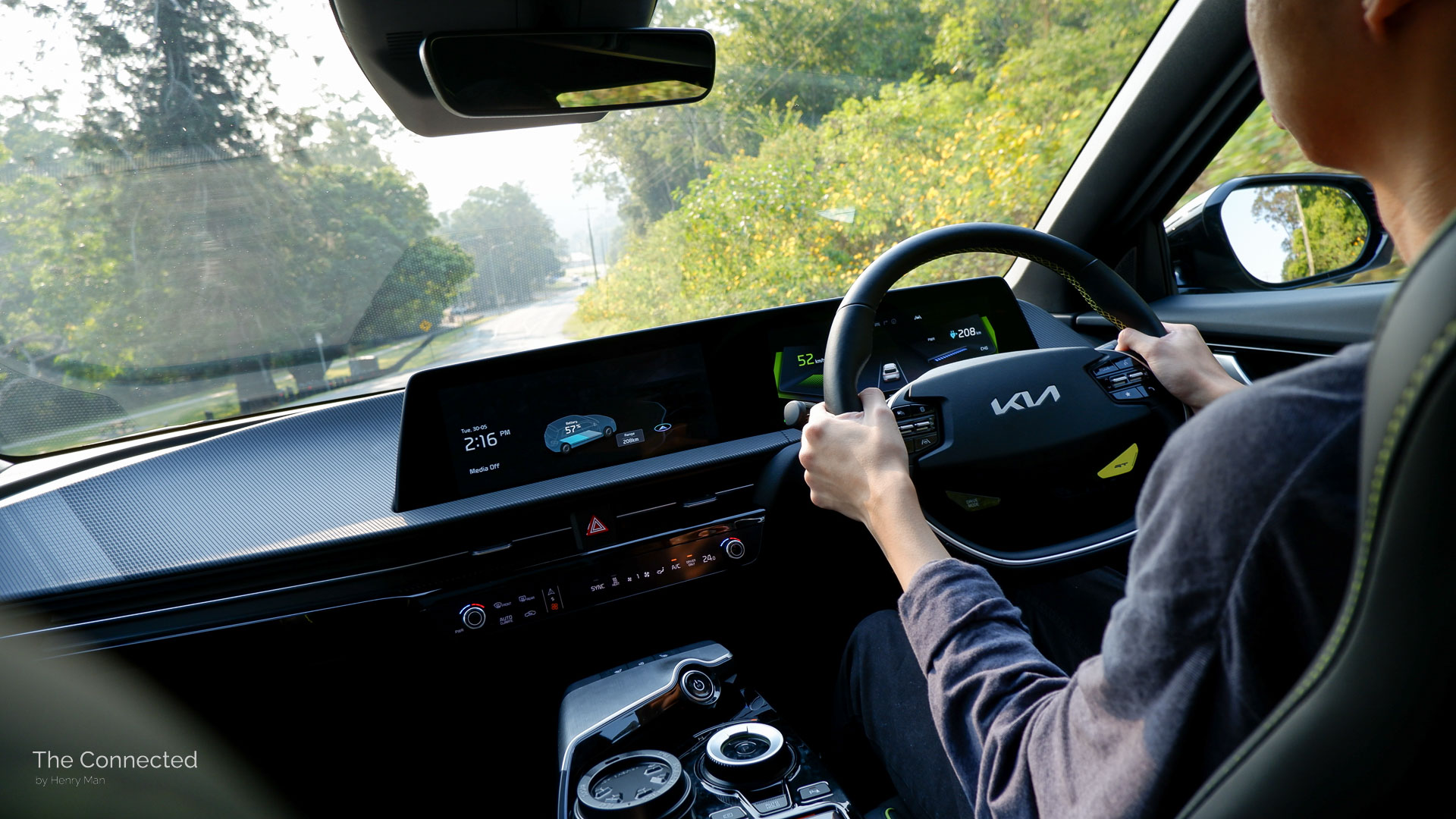

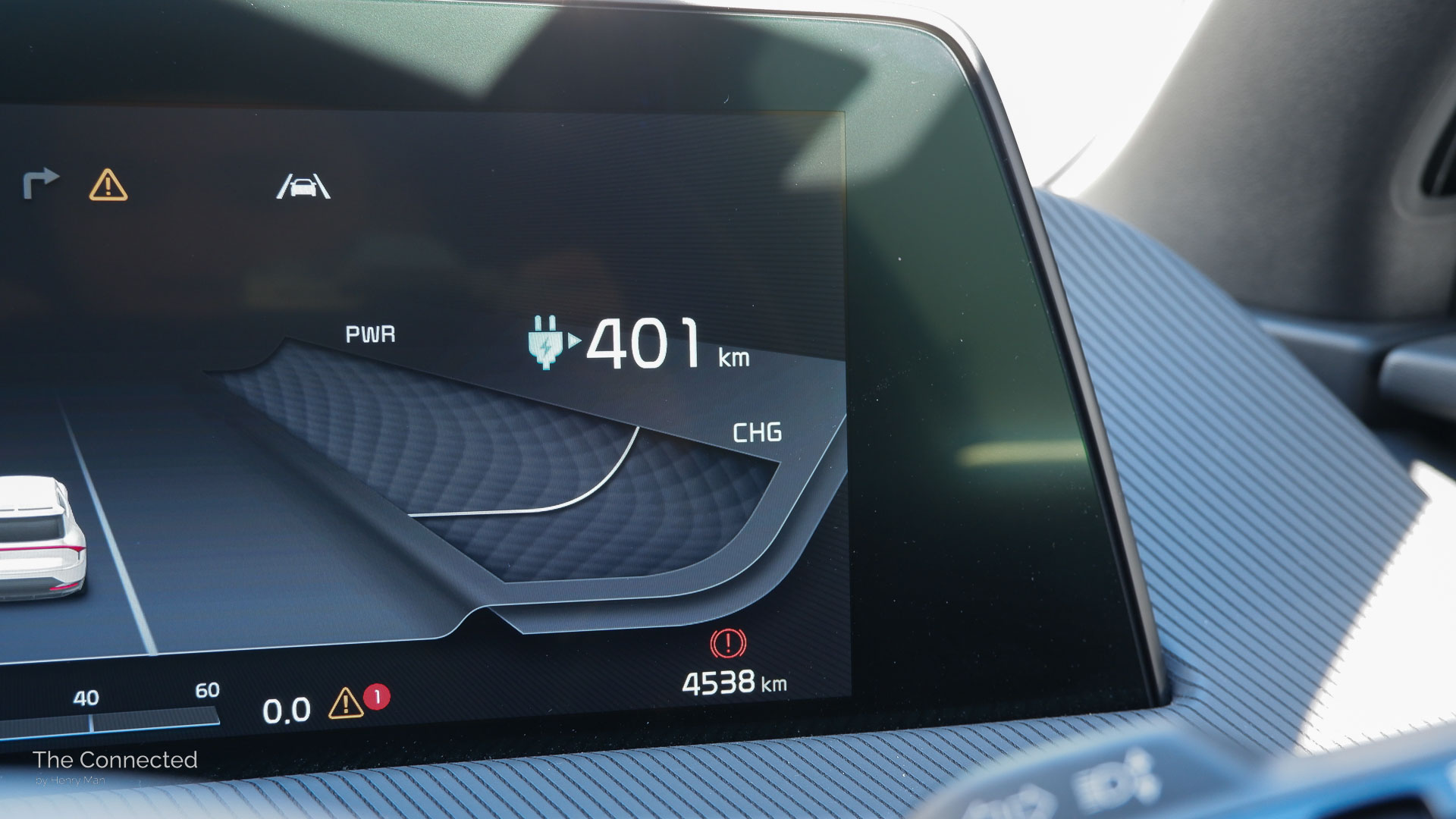

Of course, more rigorous driving on a closed-circuit track (where it is safe and legal to do so) would spike that consumption up – but my experience demonstrates that it’s a respectable daily, even if it’s still inefficient compared to the Tesla Model Y Performance and other lesser-powered electric SUVs.
However, unlike that top-selling Tesla or top-spec Hyundai Ioniq 5 Epiq, this Kia EV6 GT still lacks a heat pump to improve energy efficiency and for active battery-preconditoning.
A heat pump would’ve been appropriate for the GT, given it likely has more waste heat being produced out from the electric drive unit.
As per all EV6’s the Type 2 CCS charging port is uniquely placed beside the right of the tailgate. The flap electrically opens with a press or via the driver-side interior switches (but not on the key fob unlike the Ioniq 5) and displays a four-level charging status light.
Critically, this position can be awkward for cables to reach at side-positioned EV charging stations and I found that it tends to collect dust inside more than the common rear-quarter port placement, as on the Ioniq 5 or Model Y.
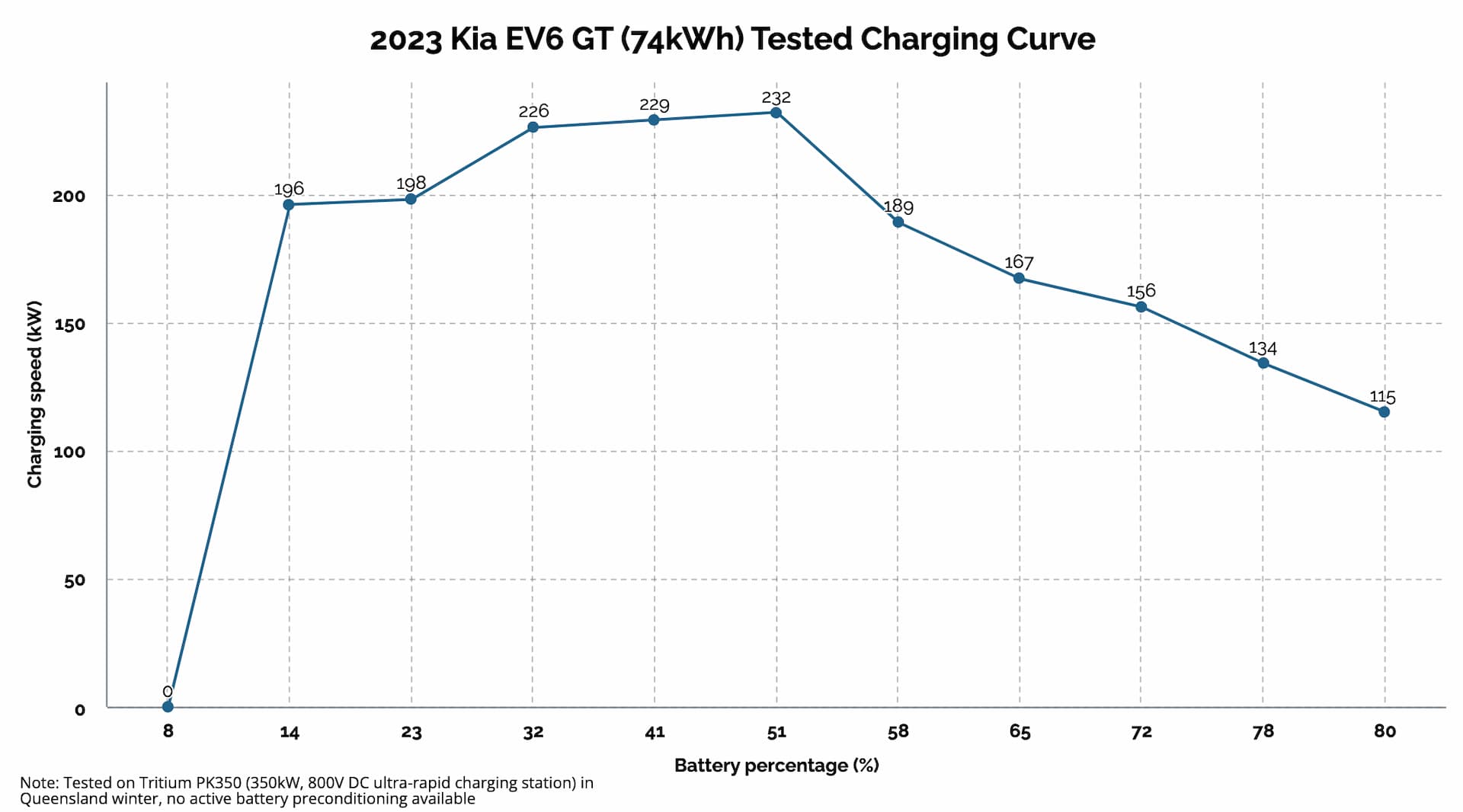
In my real-world charging test on a 350kW DC ultra-rapid 800-volt public charging station, the EV6 GT recharged from 8 to 80 per cent in around 19 minutes – matching Kia’s claim.
As per most lithium-ion type batteries, everyday charging should be limited to 80 per cent to maintain good health – unless a full charge is absolutely necessary.
At the start, it quickly ramped up to around 190kW and then achieved a 232kW peak speed at 51 per cent battery, before slowly throttling afterwards to still maintain a quick 115kW at the 80 per cent mark.
The sustained fast charging speeds are thanks to the 800-volt class E-GMP architecture. In my experience, it seems like the EV6’s battery management system (BMS) peaks slightly higher, charges slightly faster, and has a more consistent charging curve than its Hyundai sibling.
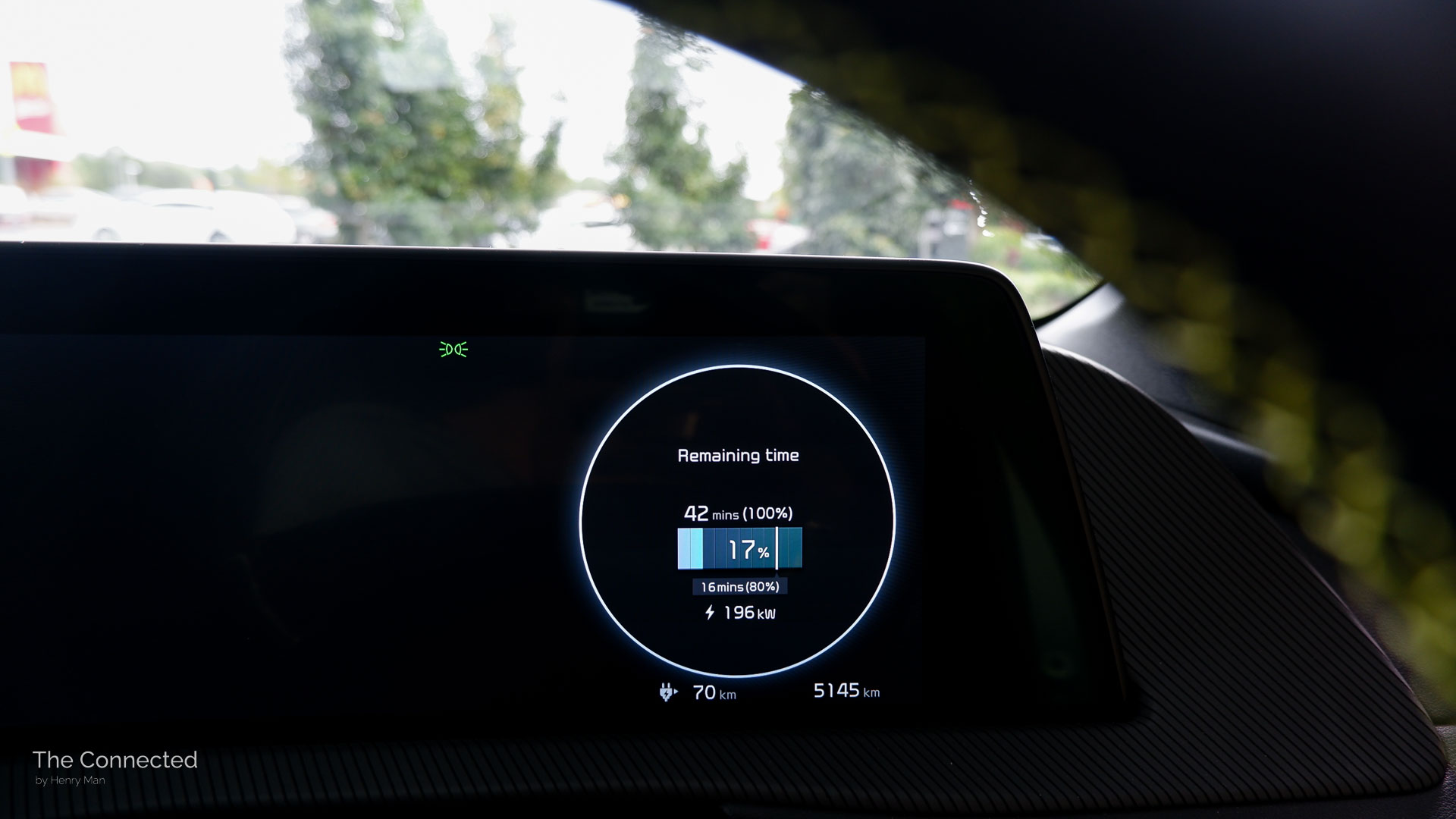


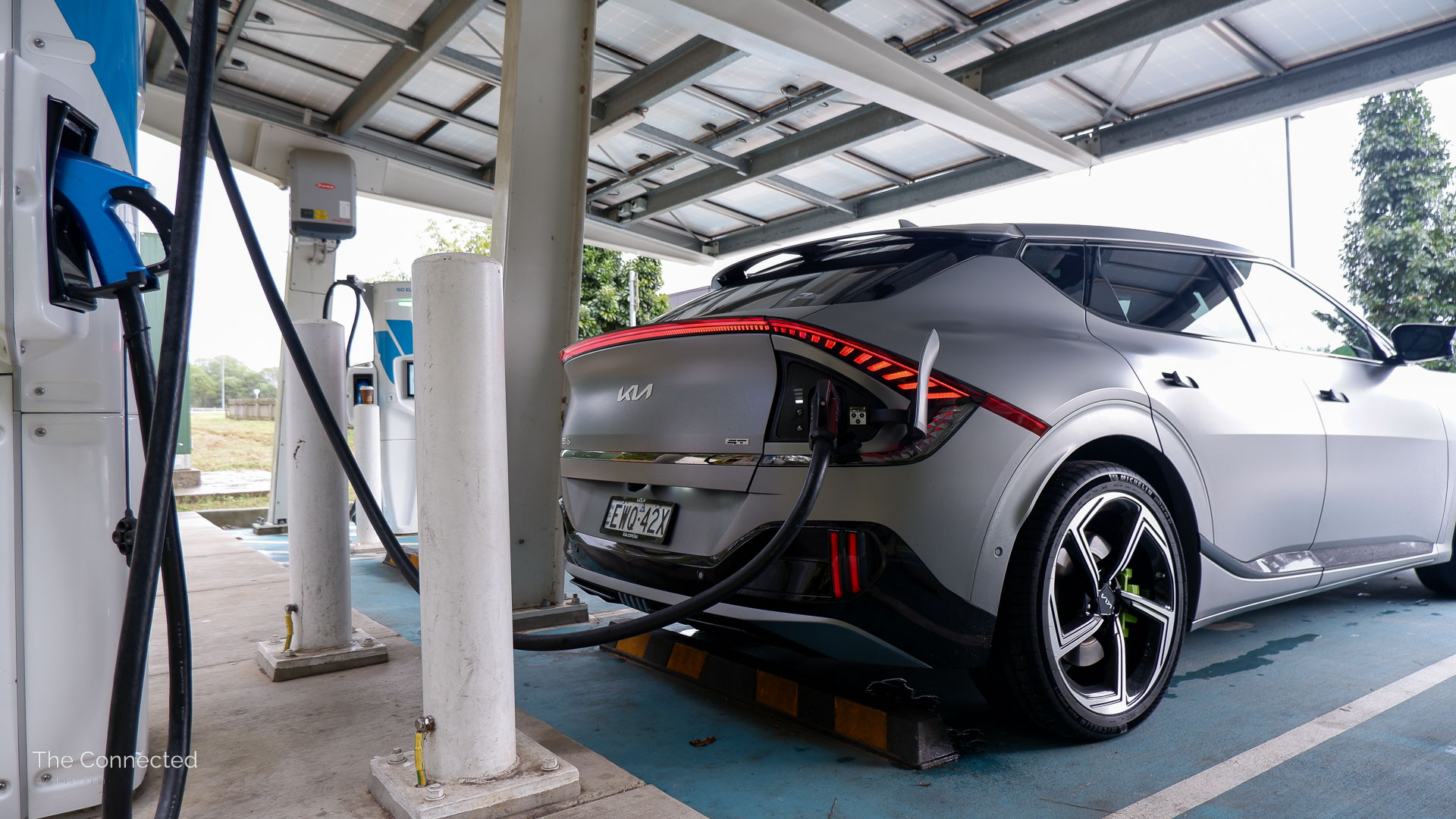


However, keep in mind that most public charging stations in Australia only output 50kW DC at 400-volts, so it’s more likely that a 10 to 80 per cent recharge would take around 72 minutes, according to Kia.
When plugged into a three-phase AC wall box, the Kia electric car maxed out at around 11kW instead of the 10.5kW AC claim.
The most ideal and cheapest way to recharge is at home, which would take about three to four nights (eight-hour periods during off-peak electricity) using the included three-pin AC trickle charging cable.
But, what’s different for the GT in terms of charging? There’s a manual battery preconditioning button meant to warm up the drive unit for maximum power, but this can also be used to achieve optimum charging speeds.
Here’s the big catch: you can only turn it on when the EV6’s battery is above 70 per cent, which eliminates its use for charging in most situations. Unlike the Ioniq 5 Epiq, the EV6 GT doesn’t offer an automatic preconditioning function via the built-in navigation system.
The EV6 GT also includes interior and exterior vehicle-to-load (V2L) to power other devices – discharging at up to 3.6kW.

Driving.
2023 Kia EV6 GT powertrain specs:
| Electric motors | Dual permanent magnet synchronous motors |
| Power | 430kW (270kW rear/160kW front) |
| Torque | 740Nm (390Nm rear/350Nm front) |
| Transmission | Single-speed |
| Drive Type | AWD |
| Claimed 0-100km/h time | 3.5 seconds |
| Tare weight | 2185kg |
| Payload | 435kg (-100kg max towball download) |
| Towing (unbraked / braked) | 750 / 1800kg |
Yes, a Kia is a hyper ‘attainable’ electric supercar.
The GT’s dual-motor setup dials the tune up to spaceship jet-like levels, with the full 430kW of power on tap at any speed. No need to change gears or be in the ideal rev band here; just a press of the neon green GT driving mode button on the wheel.
It is gravity-defying that a heavy 2185kg vehicle (479kg of which is the battery) can accelerate so rapidly, with your body needing to catch up to reality after a full acceleration.
In GT mode, the electronic traction control is partially disabled. So, there’s only some wheel slip when accelerating full pedal off the line, as the tyres try to keep up with the rapid power and torque delivery. Be aware on wet surfaces, though; it’s best to enable traction via the button beside the driver or use the custom drive mode if you’re on a public road.


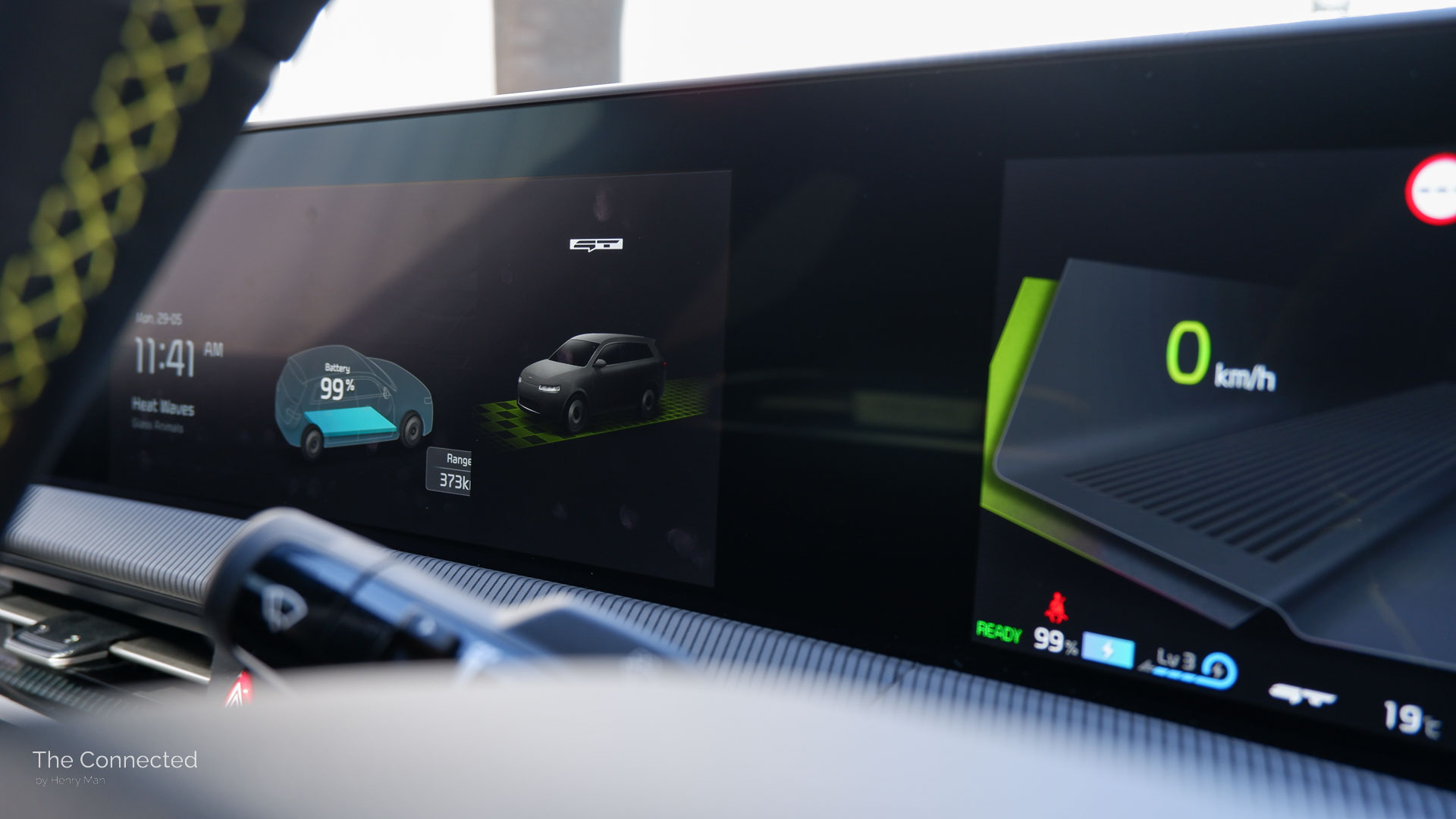
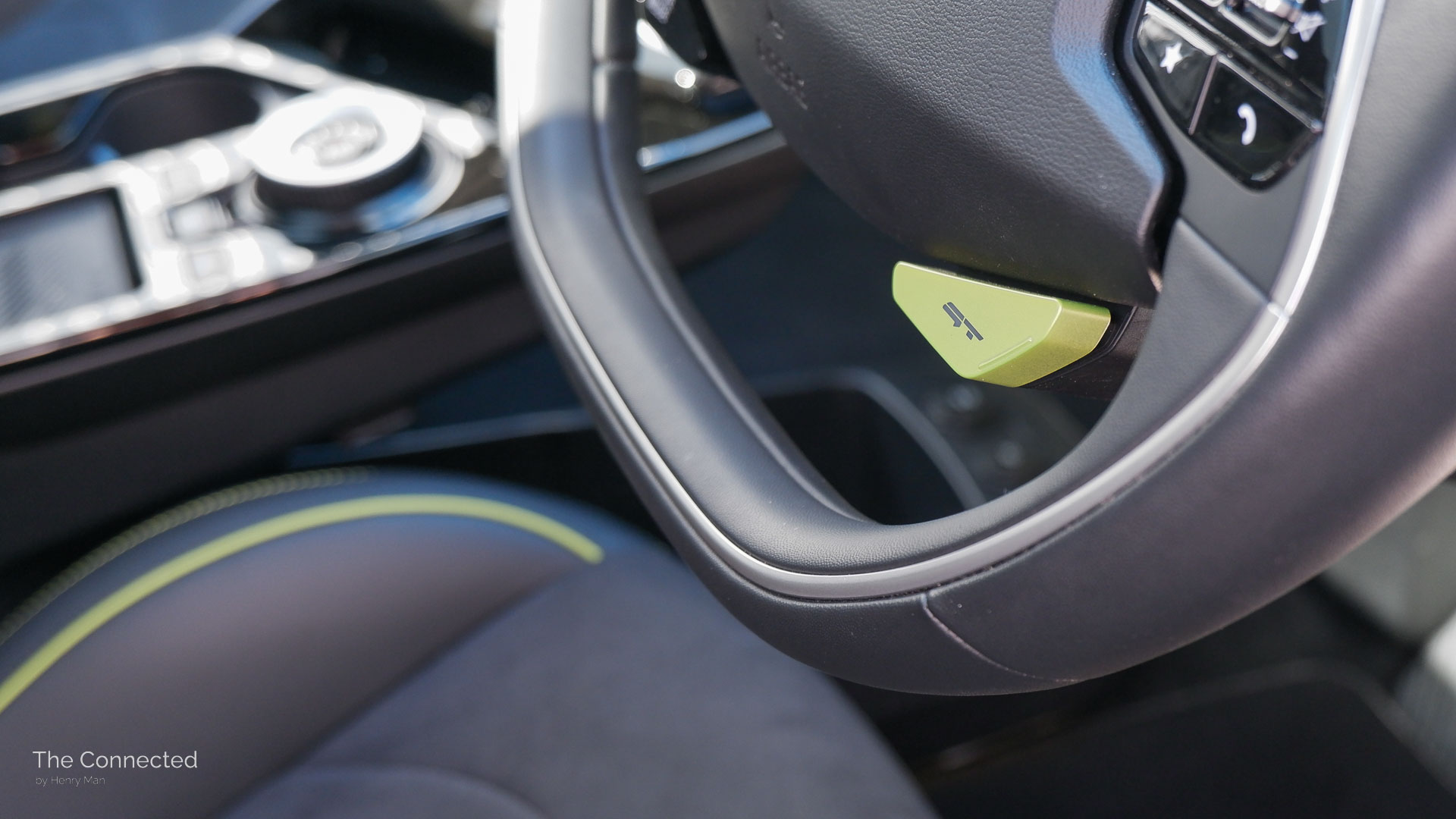
However, this rapid acceleration trick quickly wears off after a try and it’s impossible that you can exploit its full power on most public roads – legally and safely.
Additionally, to achieve maximum power, the EV6 GT battery needs to be above 80 per cent for a higher voltage state and in an optimum temperature – there’s a hidden widget in the touchscreen to manually activate battery preconditioning when above 70 per cent.
This is difficult to achieve, as the lithium-ion battery should be kept under 80 per cent everyday to maintain good health and it does take some time to warm up.
Therefore, the EV6 GT is best suited to closed-circuit track driving – one which ideally also has a DC fast charger aside – to truly extract its full potential. Otherwise, in everyday driving, it feels similar to the GT-Line AWD.

Impossibly rapid.
The EV6 GT is a hyper, yet ‘attainable’ and comfortable family-friendly electric SUV.
However, it’s impossible to truly exploit its full potential on public roads (legally and safely) and deserves to be on the track (with a fast charging station beside). If you want ‘extra’, this is it.
But, it’s not all about speed.
The low-profile Michelin Pilot Sport 4S tyres (255/40 R21) provide plenty of grip combined with the all-wheel drive powertrain and electronic rear limited-slip differential. GT mode and the rear-biased setup results in playful steering around corners, but is still stable on dry roads.
In normal everyday driving, the EV6 masks its weight well, with requisite low centre of gravity from the battery pack keeping body lean minimal. But, its lofty weight does become apparent when cornering more zealously around twisty roads at higher speeds.
Furthermore, the configurable four-step regenerative braking modes can easily be switched via the steering wheel paddles. It conveniently allows drivers to quickly make adjustments – level two when on a straight road, then level three or i-Pedal before tackling a sharp bend. As a result, the GT’s larger ventilated front and rear disc brakes are rarely used.
Combined with the ‘Stylish’ or ‘Futuristic’ Active Sound Designs set on minimum volume, the EV6 GT provides a more engaging driving experience.
Though, it’s worth noting that it doesn’t have the trick virtual gears as on the Genesis GV60 Performance and Hyundai Ioniq 5 N, nor offer any exclusive artificial driving noises compared to the regular EV6 GT-Line.



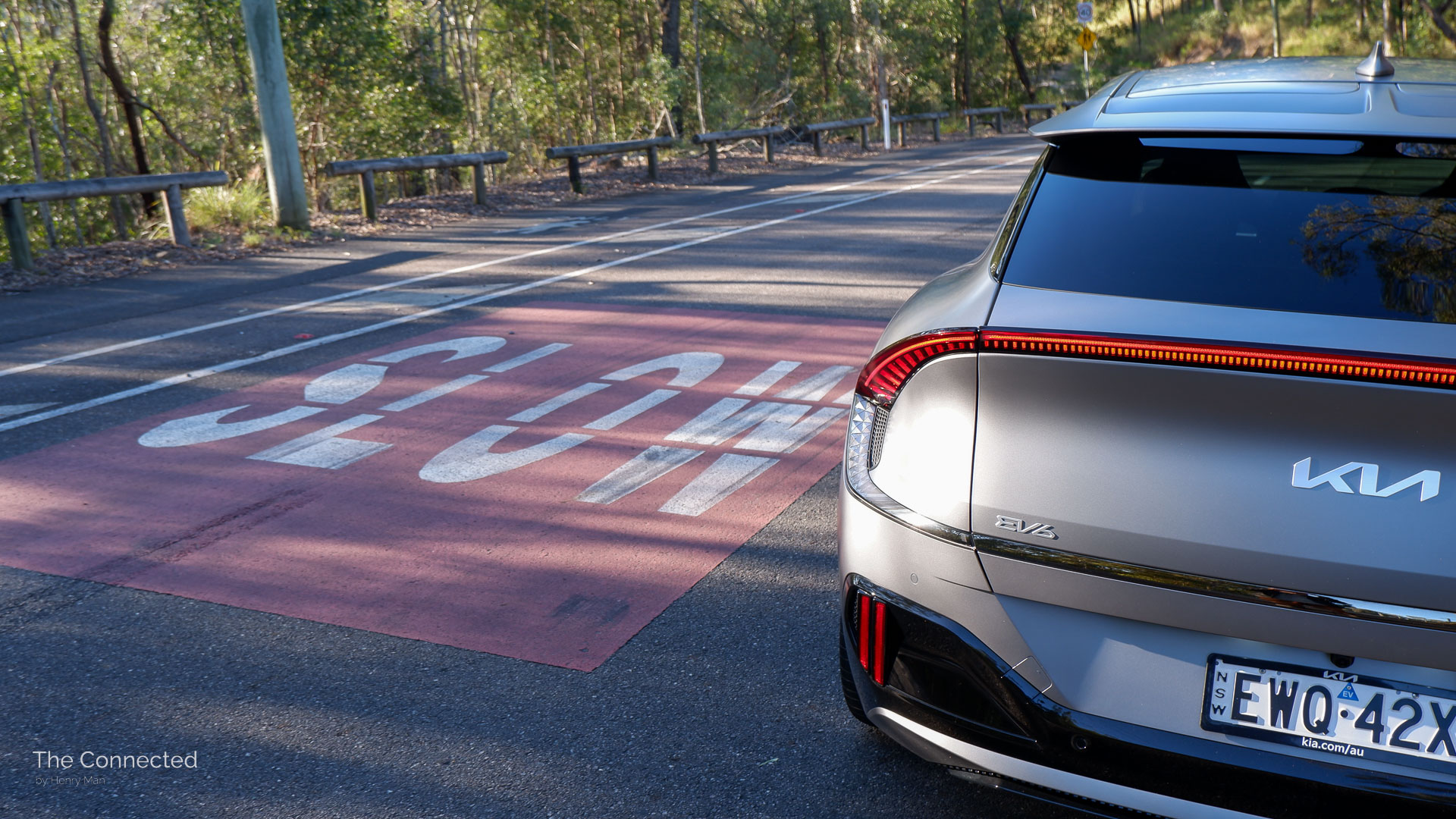

i-Pedal improved?
The Hyundai group has seemed to have improved i-Pedal software to be more sensitive in turning on the brake lights earlier, without strong regen braking.
However, despite the marketing claims, i-Pedal still isn’t one-pedal driving since it doesn’t keep the brake lights illuminated once at a complete stop – which is a critical safety issue for uninformed drivers. Though, it does now hold the brake lights – only when on a hill.
There’s the comfort side to a grand tourer, too.
Despite the low-profile tyres, the custom Australian ride and handling tune, ZF Sachs adaptive dampers and electronically-controlled suspension has resulted in a comfortable family-friendly electric car, too.
The ride is slightly firmer than the EV6 GT-Line when going over bumps and undulations, but it’s not too egregious and suitable as a daily if you keep it in normal mode. Similarly, noise isolation is still good, even though it isn’t as serene with noticeably more road roar coming from the thinner profile sports tyres.
Notably, the rear sloping roof means the rear glass is slightly narrower and the GT is slightly less manoeuvrable with a 11.9-metre turning circle, instead of 11.6-metres on all other variants.
Similar to the Ioniq 5, the driver instrument display is set forward and results in the steering wheel rim blocking some elements, depending on your driving position.

Ownership.
As with all Kia EV6 models, the GT is backed by a seven-year/unlimited kilometre vehicle warranty and a seven year/150,000km battery warranty.
The latter promises to retain at least 70 per cent of health in the coverage period, even though it’s shorter than the industry-standard eight-year/160,000km.
Roadside assistance is included for up to eight years – renewed every 12 months when you service it with Kia on time – and the capped-price servicing goes up to the first seven visits.
Servicing is required every 12 months/15,000km – which is typical for a petrol- or diesel-engined vehicle. For context, the related 2023 Hyundai Ioniq 5 EV now requires maintenance every 24 months/30,000km, albeit with pricier costs each visit.

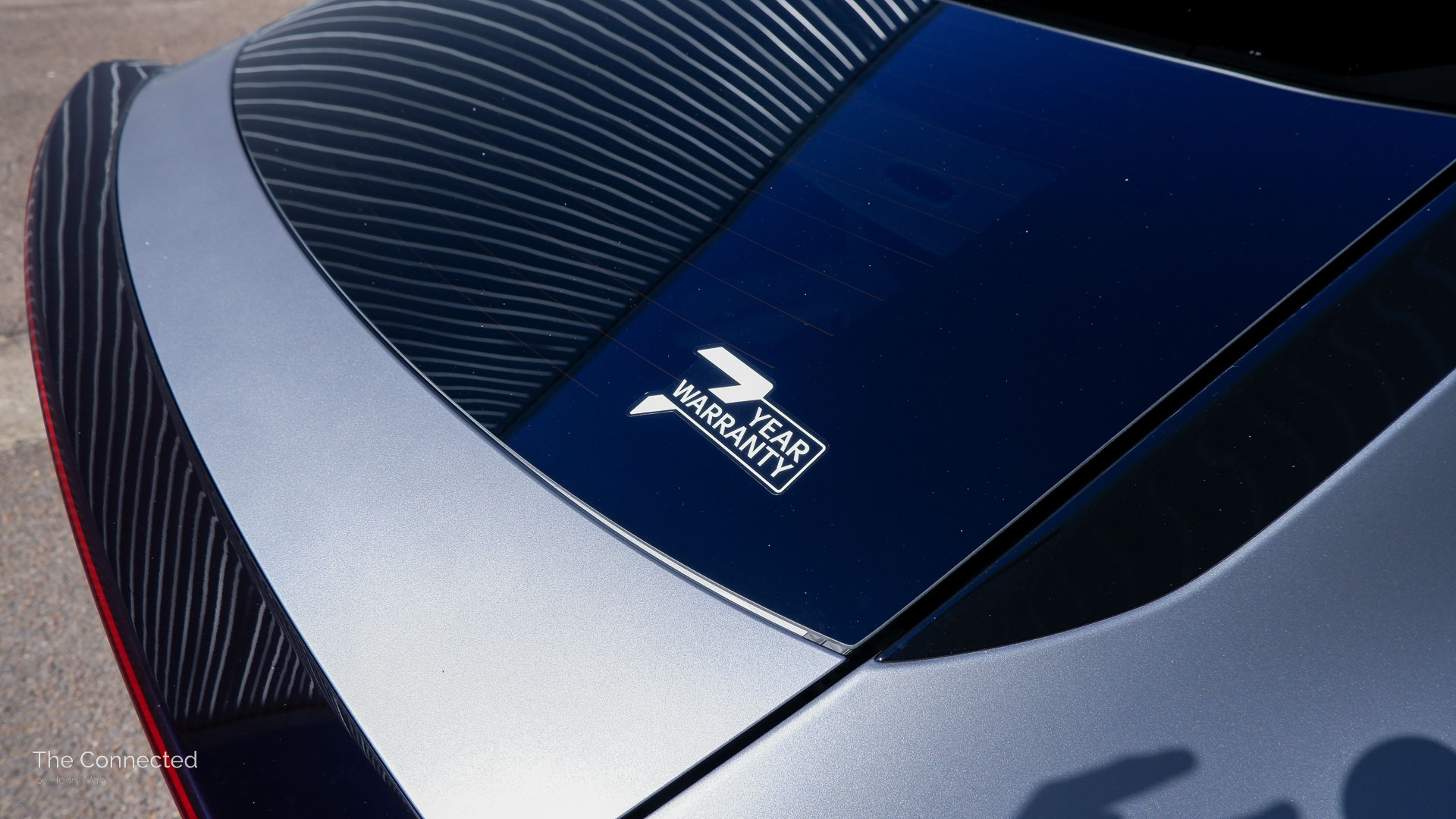
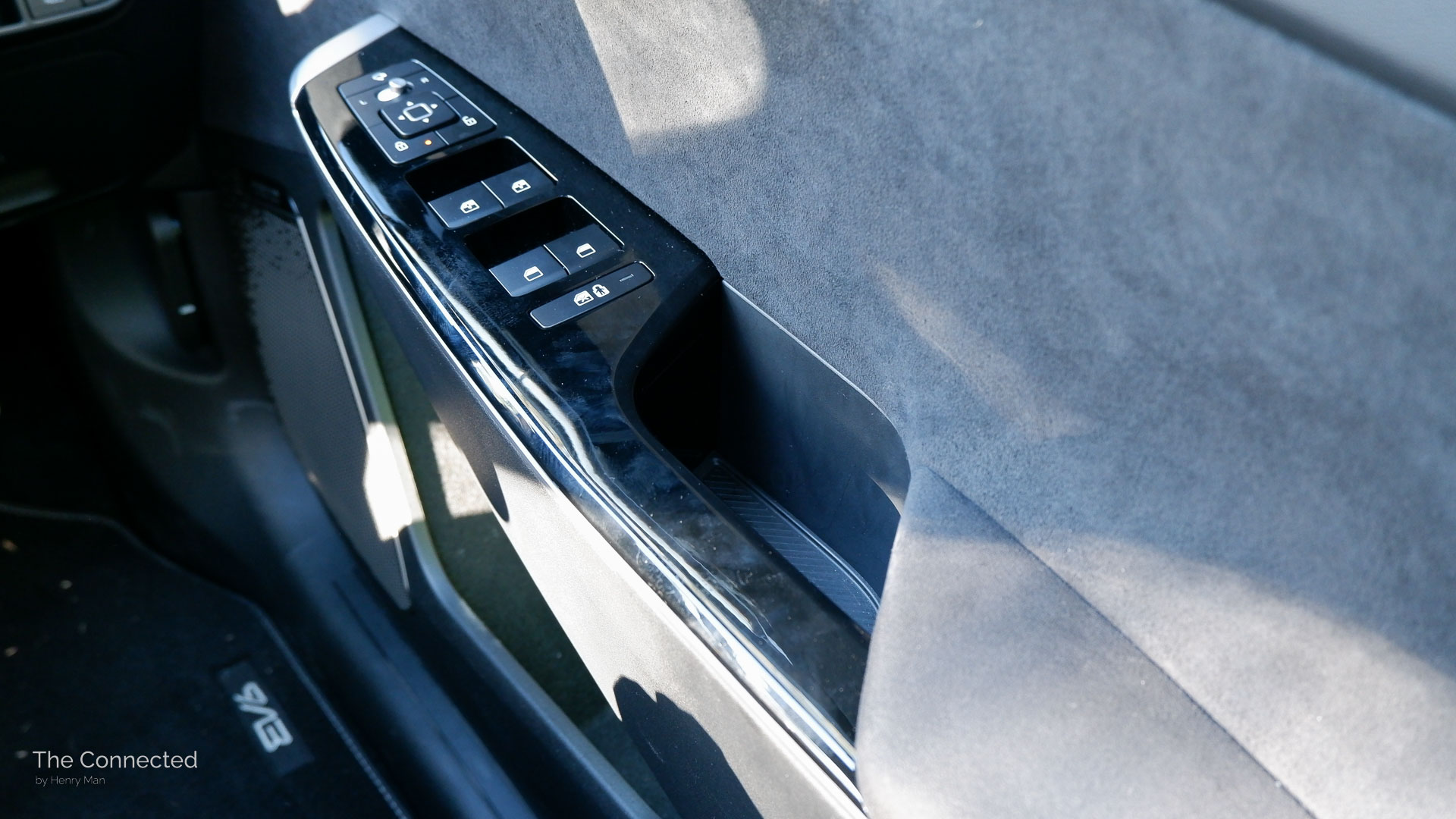

The GT is more expensive to service than regular EV6 models. After the first five visits, it’ll cost $1370 compared to the Air and GT-Line at $1088 – representing a notable premium of around 21 per cent.
After the first seven capped-price service visits are passed (seven years/105,000km), the GT is $429 more to maintain overall.
Pre-paid servicing packages are also available from Kia. However, note that they don’t save owners money compared to regular capped-price servicing – except for five- and seven-year plans which only save $1. For the GT, they are priced at:
- Three years: $733
- Five years: $1371
- Seven years: $2013
As per all electric cars, the EV6 GT doesn’t include any spare tyre; only a patch-up tyre inflation kit is stored under the boot floor.
2023 Kia EV6 GT capped-price servicing prices:
| 1 year/15,000km | 2 years/30,000km | 3 years/45,000km | 4 years/60,000km | 5 years/75,000km |
| $129 | $472 | $132 | $501 | $136 |
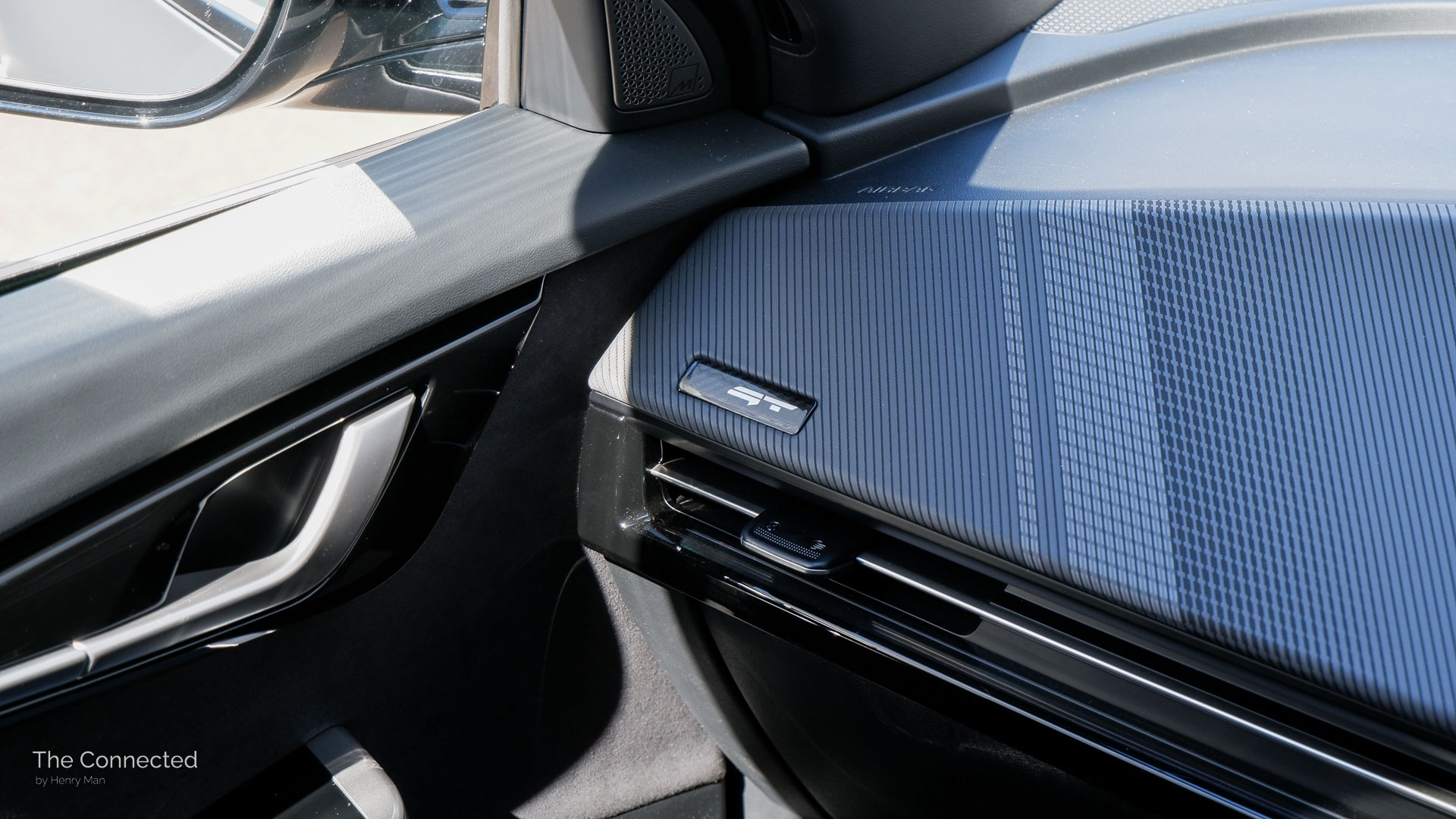
Rivals.
2023 Kia EV6 model range pricing (excluding on-road costs):
| Air RWD | GT-Line RWD | GT-Line AWD | GT |
| $72,590 | $79,590 | $87,590 | $99,590 |
The Kia EV6 GT rivals a growing set of hotted-up electric medium SUVs.
Most notably, the top-selling Tesla Model Y Performance ($91,400 before on-road costs as at the time of publication) offers a cheaper price point – even though it does periodically fluctuate – with a similar acceleration time, more claimed driving range, better practicality, a minimalistic interior, and more modern tech.
Additionally, the upcoming Hyundai Ioniq 5 N (pricing TBA) promises to be even more powerful and driver-focussed than the related EV6 GT, with 478kW outputs, external faux engine sounds, unique virtual gear shifts and jolts, and a larger battery pack.




The Ford Mustang Mach-E GT ($107,665 before on-roads) is another high-performance EV on the horizon, which is a pricier 358kW/860Nm alternative, goes from 0-100km/h in 3.7 seconds claimed, and offers the (controversial) pony badge in a sporty crossover SUV body.
As for other wildcards? The Volvo EX30 Twin Motor Performance Ultra ($69,990 before on-roads) is a smaller option coming in early 2024, but produces 315kW/543Nm to surge from 0-100km/h in just 3.6 seconds – and provides the luxury badge allure at a bargain price tag compared to the EV6 GT.
The related upmarket Genesis GV60 Performance ($113,375 before on-roads) provides less power at 234kW/605Nm and 0-100km/h time in four seconds via boost mode – but boasts a plusher interior, quirkier exterior, better connected tech and virtual gear shifting, too.

Would I pick the 2023 Kia EV6 GT?
Who said going green wasn’t fast?
The Kia EV6 GT is an ‘attainable’ electric supercar that’s also family-friendly. It provides some unique aesthetic touches, a still liveable comfy ride, and respectable energy consumption for everyday driving. Supply and wait times have (finally) improved to some normality across the range, too.
However, there’s a big but. The GT’s power is almost impossible to fully exploit on public roads (legally and safely) – so it’s best suited on a closed-circuit track with a charging station aside to keep the battery warm and above 80 per cent (which is unhealthy, especially when repeated in the long-term).
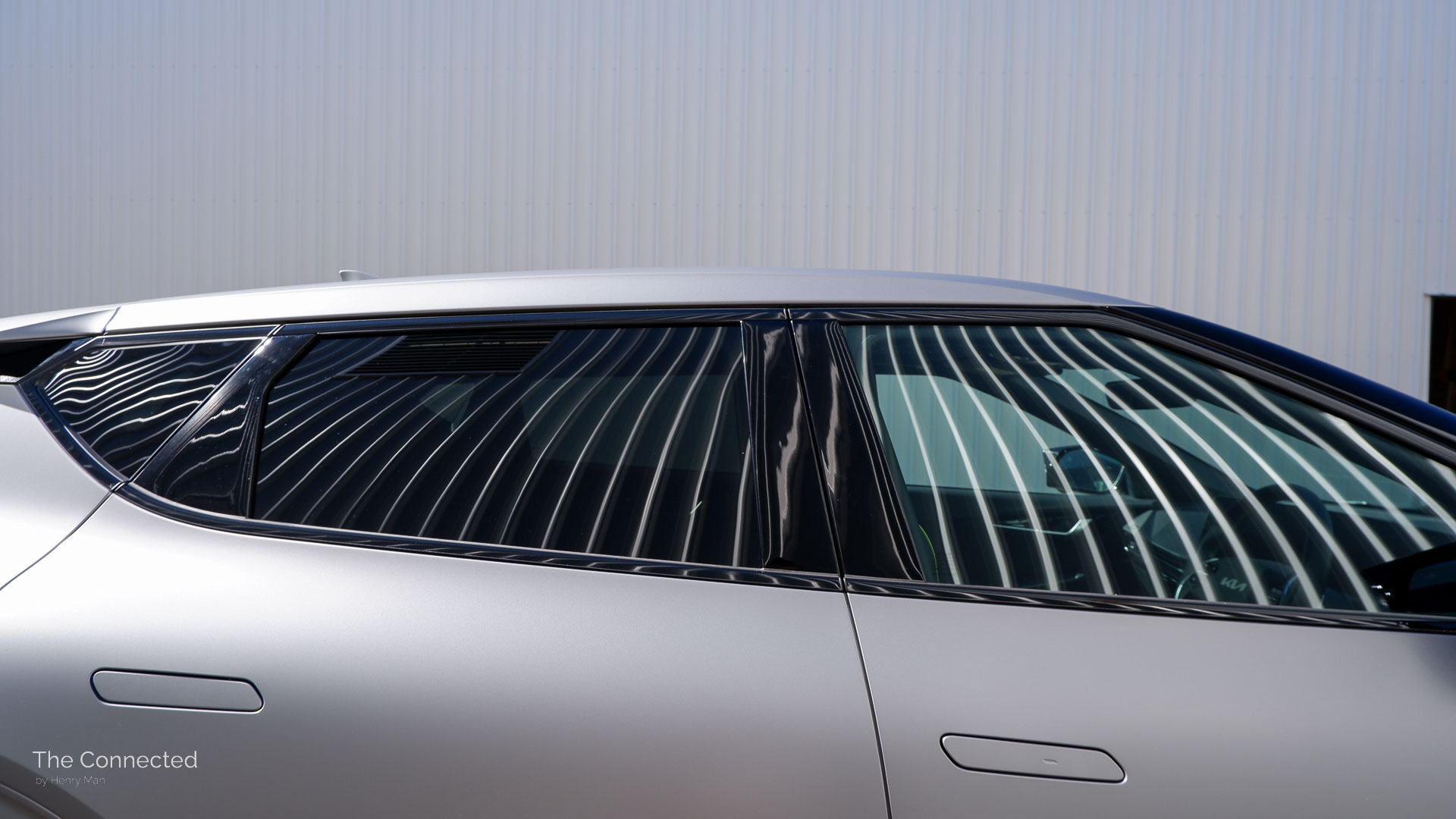
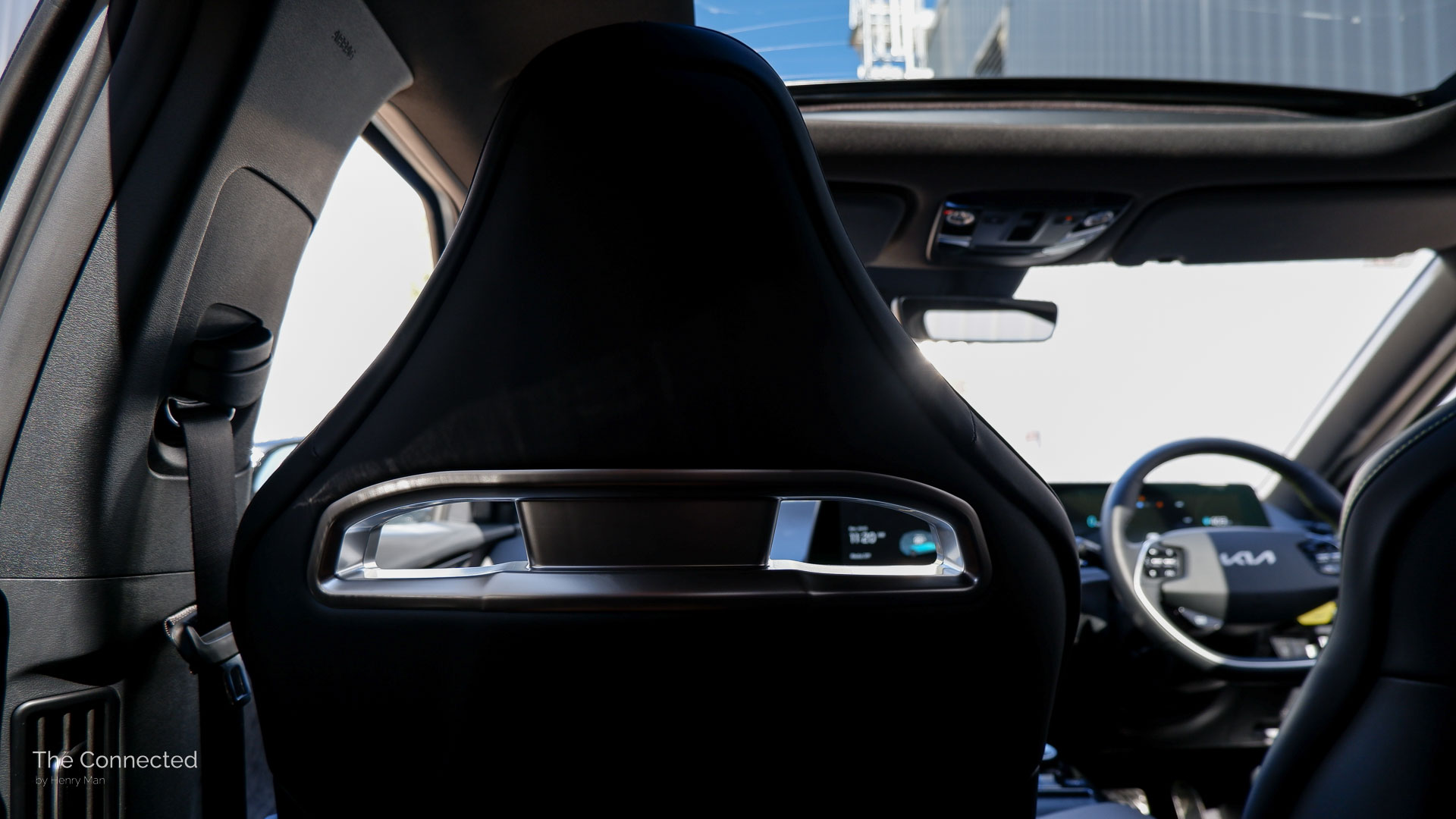
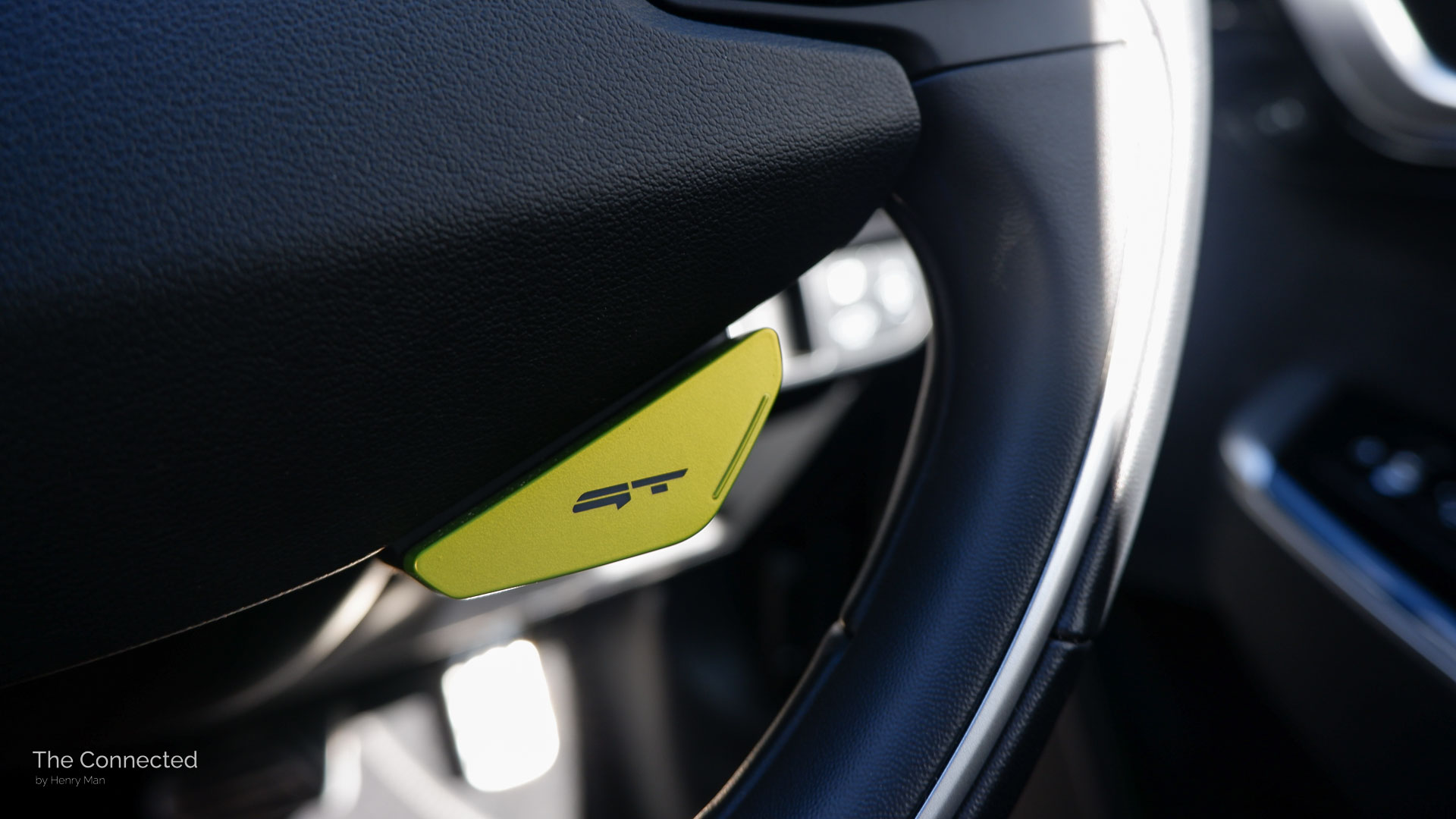

The true electric grand tourer is the EV6 GT-Line instead.
It better lives up to the GT promises with longer driving range and doesn’t omit features, including more comfortable ventilated and electrically adjustable front seats, driver’s seat memory, and auto dip-down wing mirrors.
Specifically, the GT-Line RWD is still my pick – which is a whopping $8000 cheaper than the almost identical GT-Line AWD and offers more range.
Unfortunately, the EV6 GT is a car that’s too ‘extra’ on power for everyday driving, while not having enough unique features to separate it from the regular GT-Line, and compromising in some areas.
But judging by the number of Tesla Model Y Performance’s, raised-up SUVs and utes and tuned exhausts out there, unnecessary and ‘extra’ is what some are willing to spend on…
Photographs by Henry Man
About the Author.
Henry Man is an independent journalist passionate about the intersection of technology and transportation. He is committed to meaningful journalism, detailed reporting, and balanced storytelling in the public interest.
The Connected is an altruistic initiative to publish content free from commercial interests, showcase key work, and highlight how tech and media shapes everyday society. For further information, read more here.
Henry is an alum from The University of Queensland with a Bachelor of Communication/Journalism (with majors in Public Relations and Digital Media). He has worked with organisations including Wheels Media, Zecar, and CarExpert.


